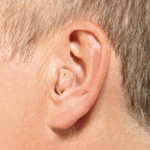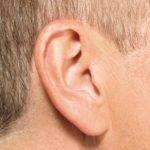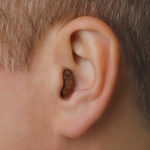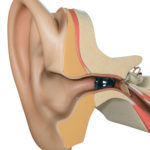Hearing Aid Reviews
With buying hearing aids online becoming easier, consumers look to reviews to make an informed decision regarding which hearing aid best suits their needs and preferences. Positive or negative, reviews are an invaluable tool when you wish to do some research before your audiologist appointment, or when you think it is time to update your hearing aids. However, hearing aids are not one size fits all devices, but instead are devices that must be programmed to your loss and ear to give you any benefits. This is because, just like all hearing losses are different, as are your ear canals. This can include the shape and size of your ear canals, which in turn affects their acoustics and how sound travels through your ear.
Therefore, while reviews can be extremely helpful in understanding the advantages and disadvantages of a chosen hearing aid, it does not necessarily mean that you will have the same results. Audiology is a field that prides itself on having patient-centred care, meaning that your opinions and knowledge are valued during appointments. Make sure you see an audiologist and consult with them on which device is best for you.
Hearing Aid Reviews Comparisons Consumer Reports
Consumer reports are reports of a detailed investigation of a specific product for consumers. They are generally characterised as reliable and unbiased sources of information that can be extremely helpful when deciding on a purchase. However, with consumers turning towards anonymous and subjective reviews being posted on business websites and personal blogs, the influence of consumer reports has decreased. While where you decide to get your information is completely up to you, it is important that you consider the possibility of the review being biased and from an individual experience that may not be the same for you.

Unlike reviews, consumer reports may also include more information regarding hearing loss, the hearing aid fitting process, different styles of hearing aids, and tips on where it is best to buy your devices. It is easy to overlook the importance of an audiologist’s opinion and expertise when online shopping is so easy, especially for first time users who can also find online hearing tests. The process of hearing aid fittings is a rigorous one that takes many factors into account in order to find the perfect device for you. A consumer report can give you more information regarding this process, while still allowing you to be an active participant in your appointments and decision-making.
In-canal Hearing Aids Reviews
Any style that does not sit behind the ear is called a custom hearing aid and can be further divided into those that sit in the ear and those in the canal. There are three types of canal hearing aids;
- In-the-canal (ITC): custom-made hearing aids that fill the lower portion of the concha and extend into the canal.
- Completely-in-canal (CIC): custom-made hearing aids that fit entirely within the ear canal, with the faceplate sitting in the entrance of the ear canal. There is a plastic wire that pokes out, whichis used to insert and remove the hearing aid.
- Invisible-in-the-canal (IIC): custom-made hearing aids that sit deeply in the ear canal, making it completely invisible. There is a plastic wire that pokes out, which is used to insert and remove the hearing aid.



Like all styles, there are advantages and disadvantages for in-canal custom hearing aids. Like the name suggests, these hearing aids are customised to fit perfectly and comfortably in your individual ear canal. A major advantage to these hearing aids is the fact that they offer discreetness. These styles allow for comfortable phone use, and no need to hold the phone at odd angles. A final advantage is that there is less wind noise than BTE styles, due to the microphone being less likely to pick up on these noises.
Due to this style fitting entirely into the ear canal, many users complain of occlusion, or a blocked feeling when they wear their hearing aids. While this can be reduced with the use of vents, CIC and IICs may be too small to allow for a large enough vent to make a difference. As these hearing aids are small, as are their batteries meaning that the battery life is less than those in BTEs. Furthermore, those with manual dexterity issues may have issues handling not only the hearing aid, but their small batteries. These hearing aids are also not recommended for those with severe to profound losses as they do not provide enough power to amplify for this degree of loss.
Invisible Hearing Aids Reviews
Invisible-in-canal (IIC) hearing aids are so discreet that even you will forget that you are wearing them! The most aesthetic hearing aids currently on the market, these invisible hearing aids are perfect for tho se who do not want their hearing loss getting in the way of their daily life. Due to the uniqueness of everyone’s ear canals, there is a small chance that they may not be completely invisible in your ears.
se who do not want their hearing loss getting in the way of their daily life. Due to the uniqueness of everyone’s ear canals, there is a small chance that they may not be completely invisible in your ears.
Other than their discreetness, a decrease in feedback is a great advantage as feedback can be very uncomfortable and can make it harder to understand speech. Not everyone is comfortable with having their hearing loss known, therefore this style is perfect for that.
Disadvantages that are due to their small size include short battery life, absence of a telecoil and bluetooth functionality, and a lack of directionality due to there not being enough space for two microphones in one device. What does that mean for you? These hearing aids will not improve speech recognition in noise like other styles that offer directional microphones. Also, because they are so deep into the ear canal, they are vulnerable to wax and moisture in the ear. Therefore, when considering this style of hearing aid, you must decide if discreetness is the biggest priority for you.
Best Cheap Hearing Aids Reviews
While they were once the most expensive styles on the market, you can find invisible and custom styles that are now generally the same price as other styles. However, even if you do manage to find a cheap invisible hearing aid, unless you take the proper care and maintenance it requires, you will have to buy new ones soon enough. When you choose to buy a cheap hearing aid, there are undoubtedly risks attached to it, such as it not working well in situations where you need the amplification most, like in noisy environments.
This does not mean, however, that cheap hearing aids do not work or that you will not receive any benefits from them. As entry-level devices, they are there for you to see how a hearing aid works and while this can be enough for someone who lives a quiet life, those who spend more time in noisy environments will require all the extra noise reducing and speech clarifying features that are provided in more expensive devices.
Contact us on 1300 848 335 today for a free, no obligation consultation with one of our qualified consultants.

Ask an Expert
No Response